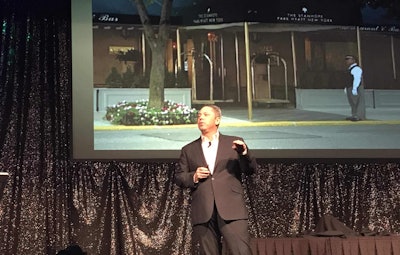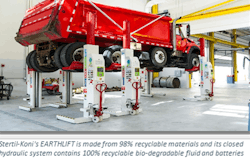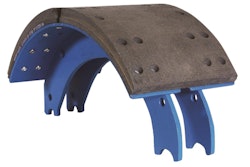 Speaking at Heavy Duty Aftermarket Week in Las Vegas Tuesday, Colin Gold, Owner Gold Level Hospitality, says traditional customer service, good or bad, is a cold and often-lifeless process.
Speaking at Heavy Duty Aftermarket Week in Las Vegas Tuesday, Colin Gold, Owner Gold Level Hospitality, says traditional customer service, good or bad, is a cold and often-lifeless process.Taking your customer service to a higher level could mean changing the way you think about it entirely.
Speaking at Heavy Duty Aftermarket Week (HDAW) in Las Vegas Tuesday, Colin Gold, Owner Gold Level Hospitality, says traditional customer service, good or bad, is a cold and often-lifeless process.
“Customer service is ordinary. It’s transactional,” he says. “We’re trying to create a fan culture.”
Gold says turning customers into your fans could boost their satisfaction, which leads to more return business.
“When you create fans and experiences, they’re going to come back,” he says.
Creating fans is an extension of excellent customer service, but good customer service is an expectation. When businesses blow it, they tend to blow it in a major way. By turning customers into fans, Gold says customers become invested in the business partnership and the role they play in a business’ success and good experiences bank equity against potential future bad experiences.
Gold, comparing customers-turned-fans to fans of sports teams, notes that sports fans are loyal, devoted, understanding and forgiving. All those components, Gold says, means fans of a given business are more likely to excuse a mishap because they’ve become a fan of the company and the overall good experience it historically provides.
“You’re creating that relationship,” he adds. “It becomes a partnership. There’s a give and take. There’s an understanding.”
And, Gold says, fandom doesn’t stop with your customers.
 Thomas Nestor, author and founder of Leadership Today says partnerships meets six basic personal needs: predictability, variety, significance, connection, growth and the need to give.
Thomas Nestor, author and founder of Leadership Today says partnerships meets six basic personal needs: predictability, variety, significance, connection, growth and the need to give.Thomas Nestor, author and founder of Leadership Today says partnerships meet six basic personal needs: predictability, variety, significance, connection, growth and the need to give.
The best way to build partnerships, Nestor adds, is to communicate openly and build trust.
“You get trust from certainty, and it is the one common thing that in every company that, if removed, it will destroy everything,” Nestor says.
Trust, he says, is a function of “what we do and how we do it.”
For every good action, he says you build trust and equity with customers. And for every bad action, you lose some of that equity.
“And when you’re out of [equity], you’re out [of the partnership],” Nestor adds.
Technology has changed how communication happens, but Vice President of SAF-Holland’s Aftermarket business Carl Mesker says it hasn’t changed the importance of it.
There are five basic steps in building partnerships, Nestor says, but all lead back to trust: Talk straight, right wrongs, deliver results, clarify expectations and keep your commitments.
“You’ve got to be able to have a deliverable,” says Ed Neeley of Truck Supply Company of South Carolina.
“[And] if you don’t know the answer, go find it,” adds Walt Sherbourne of Dayton Parts. “The thing you have to deliver is the value. What are you going to do to get the product off the shelf and help them make more money.”
Point Spring and Driveshaft’s Sean Ryan says his company values the training his suppliers bring to his business.
“They’ve got a great inside team that our guys call all the time and that’s a big thing for us,” Ryan says. “We look for long-term partners.”
Finding belief systems and values that align with yours, Nestor says, are the most critical steps in choosing partners.
“Who are you getting involved with,” he says. “After you’ve figured out the logistical side … where do they stand?”
Also, Nestor says, it’s not important to focus on building an equal partnership as long as both participants are upholding their ends of the deal.
“If both people are doing what they said when they agreed to a partnership,” he says, “then that’s what makes a great partnership.”










